Discover 15 hidden attractions, cool sights, and unusual things to do in Segovia (Spain). Don't miss out on these must-see attractions: Aqueduct of Segovia, Alcázar de Segovia, and Segovia Cathedral. Also, be sure to include Monument to Daoiz and Velarde in your itinerary.
Below, you can find the list of the most amazing places you should visit in Segovia (Castile and León).
Table of Contents
Aqueduct of Segovia

Also known as: Acueducto de Segovia
Towering Roman aqueduct with 167 arches. The Aqueduct of Segovia is a Roman aqueduct in Segovia, Spain. It is one of the best-preserved elevated Roman aqueducts and the foremost symbol of Segovia, as evidenced by its presence on the city's coat of arms.[1]
Address: Plaza del Azoguejo, 1, 40001 Segovia
Alcázar de Segovia
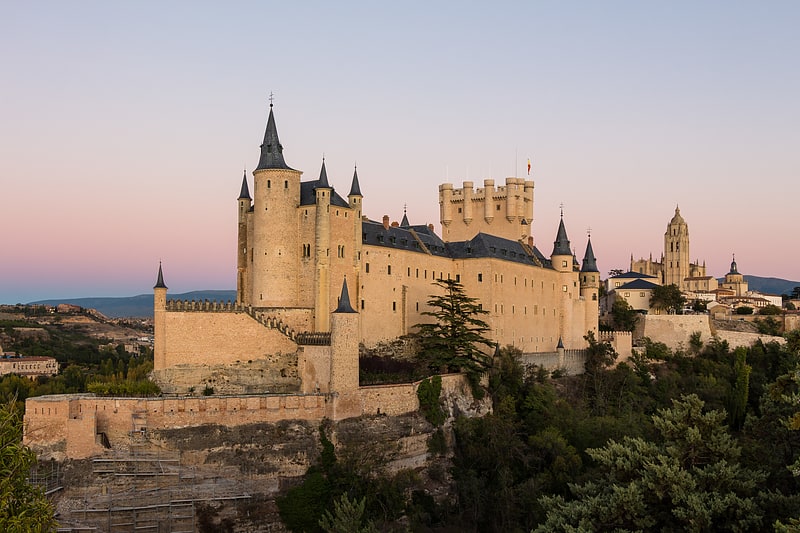
Restored 12th century castle. The Alcázar of Segovia is a medieval castle located in the city of Segovia, Castile and León, Spain. The fortress is a World Heritage Site by UNESCO. Rising out on a rocky crag above the confluence of two rivers near the Guadarrama mountains, it is one of the most distinctive castle-palaces in Spain by virtue of its shape – like the bow of a ship. The alcázar was originally built to serve as a fortress but has served as a royal palace, a state prison, a Royal Artillery College, and a military academy since then. It is currently used as a museum and a military archives building.[2]
Address: Plaza Reina Victoria Eugenia, s/n, 40003 Segovia
Segovia Cathedral

Also known as: Catedral de Segovia
Cathedral in Segovia, Spain. Segovia Cathedral is the Gothic-style Roman Catholic cathedral located in the main square of the city of Segovia, in the community of Castile-Leon, Spain. The church, dedicated to the Virgin Mary, was built in a Gothic style in the mid-16th century.[3]
Address: Calle Marqués del Arco, 1, 40001 Segovia
Monument to Daoiz and Velarde

The Monument to Daoiz and Velarde is an instance of public art in Segovia, Spain. Designed by Aniceto Marinas, it is a memorial to Luis Daoiz y Torres and Pedro Velarde y Santillán, two Spanish artillery officers who fell fighting against the French army at the 1808 Dos de Mayo Uprising, in the context of the Peninsular War. It is located near the Alcázar of Segovia.[4]
Iglesia de la Vera Cruz

Church in Spain. The church of the True Cross is a Roman Catholic church located in the San Marcos district of the city of Segovia, in the autonomous community of Castile and León, in Spain. Formerly known as the Church of Holy Sepulchre, it is located to the north of the city, very close to the convent of San Juan de la Cruz, on the slope that ascends to Zamarramala, a town of which it was, for centuries, a parish church.
It consists of a nave with a dodecagonal floor plan that surrounds a small central two-story shrine (edicule), to which apses and the tower were added. It is one of the best-preserved churches of this style in Europe. It was declared a Spanish Property of Cultural Interest on 4 July 1919.[5]
Address: Carretera de Zamarramala, Segovia
Plaza Mayor
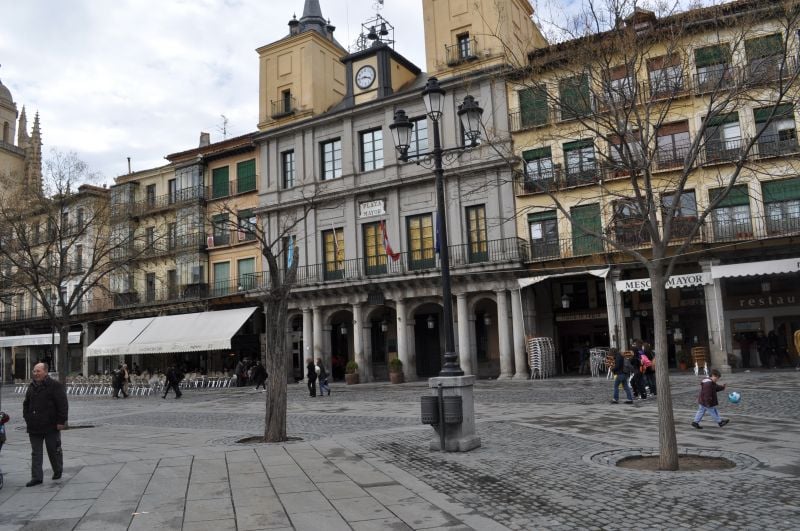
Plaza Mayor is a town square in Segovia, Spain, located at the end of the street called Calle Real, which is one of the most famous streets in Segovia. Within Plaza Mayor, you can find several important buildings, such as the town hall, the Juan Bravo Theatre, the San Miguel Church, and the cathedral.[6]
Address: Plaza Mayor, Segovia
Monastery of Santa Cruz la Real
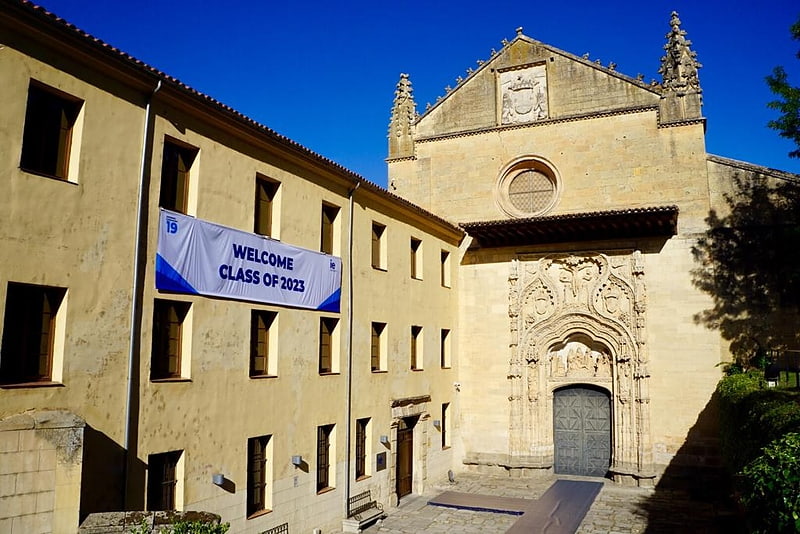
The Monastery of Santa Cruz la Real in Segovia, Spain, dates back to the 13th century. It has undergone several renovations and currently houses IE University. In 1985, UNESCO declared it a World Heritage Site.[7]
Old main synagogue
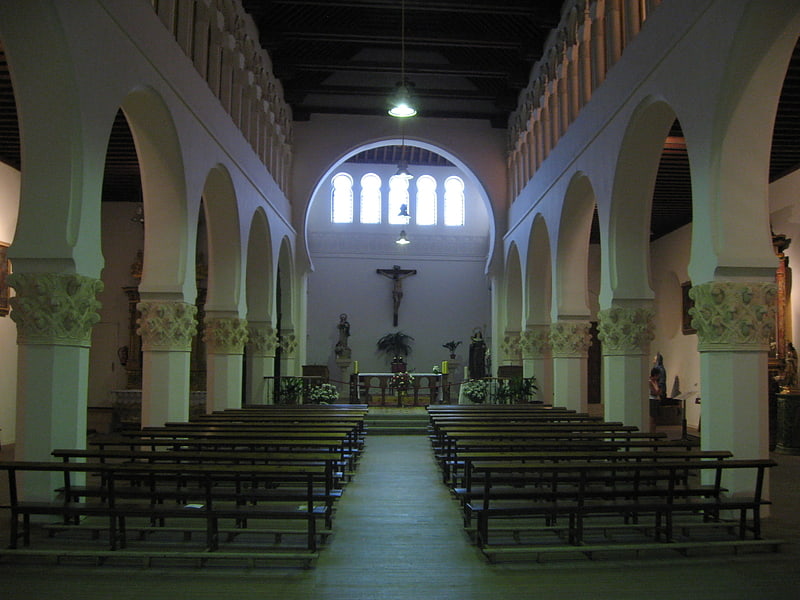
Synagogue. The old main synagogue is a religious edifice in Segovia, Spain. Dating to the 14th century, it was converted into a convent of the nuns of Order of Saint Clare. The building was almost completely destroyed in a fire in 1899 and has been reconstructed since.[8]
Puerta de Santiago
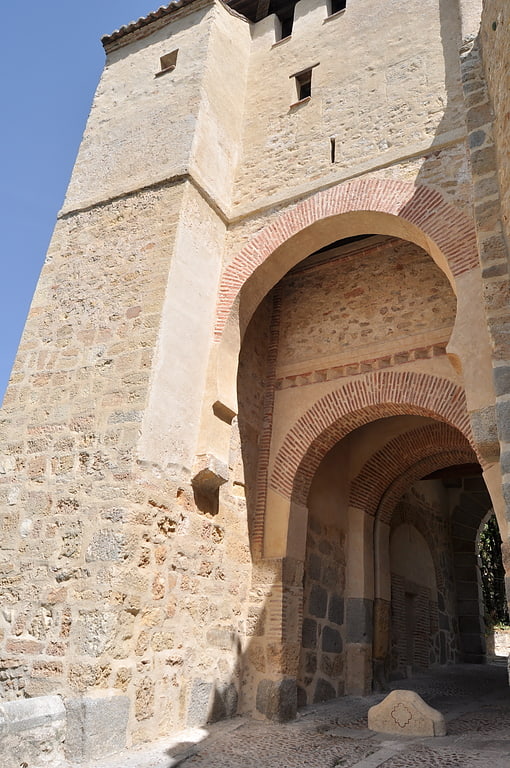
The Puerta de Santiago is a city gate in Segovia, Castile and León, Spain, forming part of the city's medieval fortifications.[9]
Monastery of Santa María del Parral
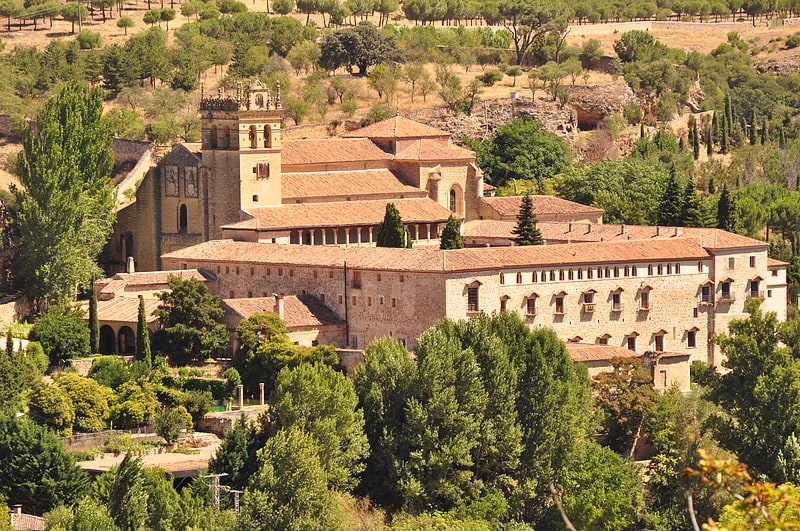
Also known as: Monasterio de Santa María del Parral
Monastery in Spain. Monastery of Saint Mary of Parral is a Roman Catholic monastery of the enclosed monks of the Order of Saint Jerome just outside the walls of Segovia, Spain.[10]
Address: Calle Parral 2, 40003 Segovia
Walls of Segovia
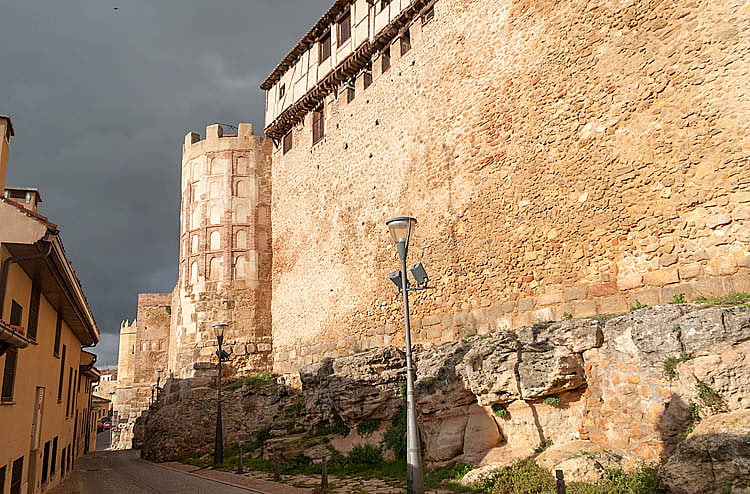
The walls of Segovia are the remains of the medieval city walls surrounding Segovia in Castile and León, Spain.
The walls of the Castilian city of Segovia complete a circuit of about 2,250 metres (7,380 ft) in length, with an average height of 9 metres (30 ft) and an average thickness of 2.5 metres (8 ft 2 in). They are built out of many different materials, with some parts of great antiquity, although most date back to the 11th and 12th centuries, which major renovations in subsequent centuries. From the Alcázar to the gate of Santiago, there are two circular towers and a rectangular one. The Puerta de Santiago, which has a rectangular plan, has a horseshoe arch. The wall continues to the north of the city's historic centre, dominating the Eresma River, until it reaches the gate of San Cebrián, which has a crucifix at its entrance.
From this point the wall, raised on rock, continues in an easterly direction until the former San Juan gate. This was an ornamental arch built in the 16th century, and it was demolished in 1888 due to urban needs. The wall continues to the south and then to the west, in a section that included the Postigo del Consuelo, the Portillo de la Canaleja and the gates of San Martín, la Luna and del Sol. Continuing towards the west, one arrives at the Puerta de San Andrés, which has a square and a polygonal tower. From there the wall continues to close its perimeter at the Alcázar.[11]
The Coining House
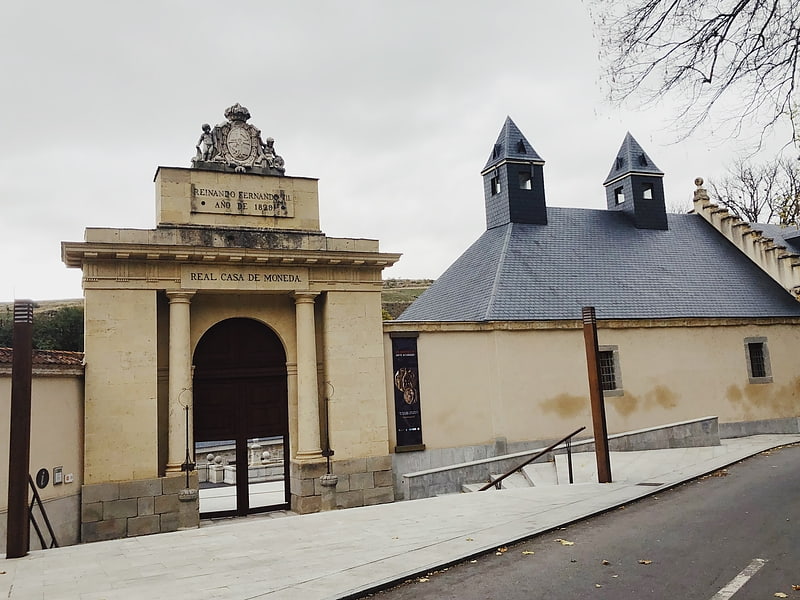
The Coining House is a former royal mint in Segovia, Spain, which dates back to the 1500s. Today, it is a museum dedicated to coins, industrial heritage and Segovia's famous aqueduct.[12]
Church of San Esteban
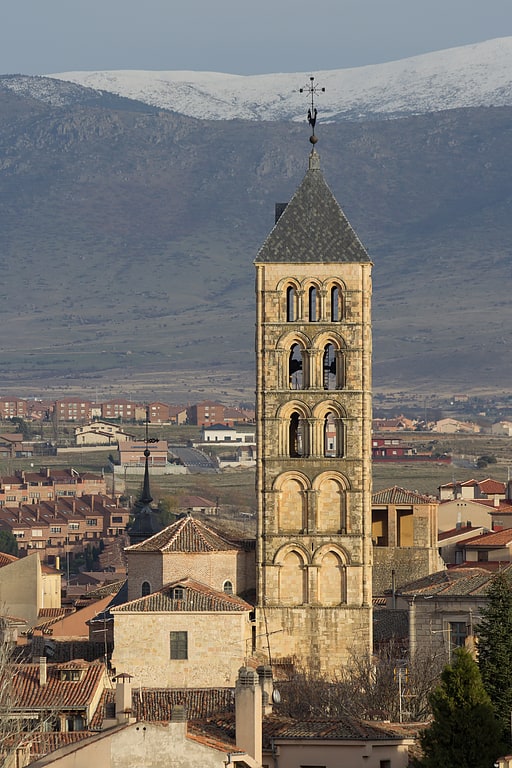
Also known as: Iglesia de San Esteban
Catholic church in Segovia, Spain. The Church of St Stephen is one of a number of medieval churches in Segovia, Spain. It dates from the 12th century and is noted for its Romanesque bell tower.[13]
Address: Pz. San Esteban 1, 40003 Segovia
Tower of San Esteban
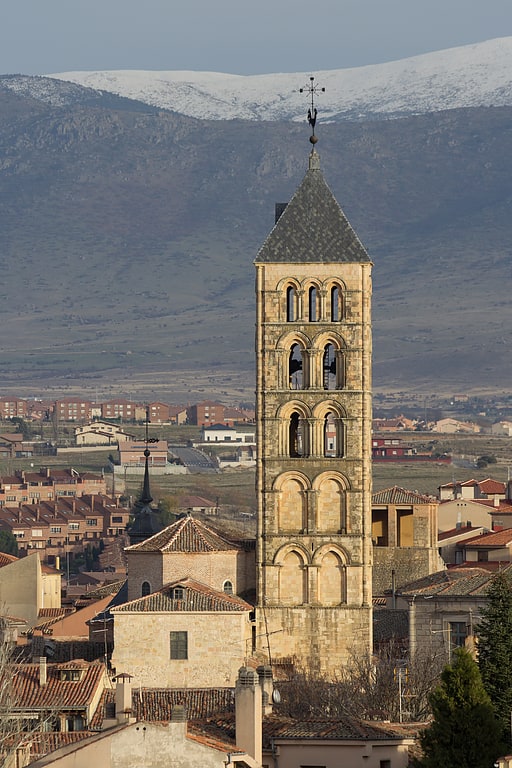
Also known as: Iglesia de San Esteban
Catholic church in Segovia, Spain. The Church of St Stephen is one of a number of medieval churches in Segovia, Spain. It dates from the 12th century and is noted for its Romanesque bell tower.[14]
Address: Calle Valdeláguila 15, Segovia
Puerta de San Andrés

The Puerta de San Andrés is a city gate in Segovia, Castile and León, Spain, forming part of the city's medieval fortifications. It is listed as a Bien de Interés Cultural.[15]